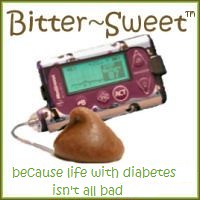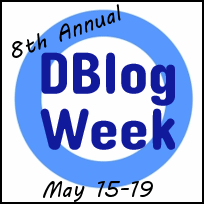As I sit down to write this post, I realize I haven’t really done a very good job at blogging about my Enlite sensor experience. I guess the reason is that I seem to only blog about problems. I just don’t feel inclined to write a post saying “Hey, everything is good and I have nothing to say”. And, of course, I always feel like the minute I blog about how perfect something is going, it all immediately goes to crap. Stupid blog jinx.
But, for the most part, my experience with the Enlite sensors has been fantastic. I think my only complaint is that the sensor wire kinks up quite easily. (Is it still called a cannula on a sensor? Or is sensor wire the right term?) I don’t remember ever having a kinking problem with the Sof-Sensors, so my guess is that the trade-off for the much thinner needle and wire is that it’s more prone to kinking. If that is the case, I think I would be willing to have some sort of middle-ground - a thickness somewhere between Sof-Sensor and Enlite, so there is more comfort than Sof-Sensor but less kinking than Enlite. (And with both systems I still wish warm-up time took less than 2 hours and range was better. And that my CGM data went to the cloud.) But overall, I’m really happy. The accuracy, for me, is terrific right from the start and the new tapes hold everything in place perfectly.
Yesterday, however, I had a lot of trouble. It was sensor change day, so I inserted a new sensor while my morning coffee was brewing. I like to eat breakfast late, and my coffee bolus is spot on and keeps my blood sugar flat, so that’s the best time for me to start up a new sensor. Two hours later it was ready to go and I entered my first blood sugar. Six hours later it was time to calibrate. The sensor said I was 83. My fingerstick said I was 93. A few minutes later? Beep beep beep, CAL ERROR. I was surprised to get a CAL ERROR when the sensor and fingerstick values were so close, so I tried calibrating again. Beep beep beep, BAD SENSOR.
I thought about turning everything off and restarting it as a new sensor in a few hours, but decided it wasn’t worth it. I pulled the sensor out and got everything ready to put in a new one. Loaded up the serter, pressed the button, waited 45 seconds to be sure the adhesive stuck, and began to draw off the serter . . . . when I could see that the sensor needle was only halfway in my skin. Great. I carefully pulled everything off and decided to try to load the sensor back into the serter and try again. But the same thing happened. SO I pulled that second sensor and got out a third. It inserted fine, but as I removed the serter the needle came off with it. The sensor was properly in me, but the needle was stuck in the serter and wouldn’t come out. That was when I realized I was long overdue for a call to the Medtronic HelpLine.
 |
| Two dead sensors & a serter with a needle stuck in it. |
I’ve always had great experiences with the HelpLine and yesterday was no exception. Here are the tips I learned. 1) When I got that first CAL ERROR, I should have cleared it but then waited 45 minutes to an hour before trying to calibrate again. The error comes up when the interstitial signal doesn’t jive with what the meter says your blood sugar is. Waiting an hour gives it time for the signal to hopefully recover and for some of the sensor data to clear out. 2) When the second sensor didn’t go in on the first try, I shouldn’t have tried it again. Once the serter tries to insert it and fails, it’s pretty much a given that the sensor wire has been damaged and the sensor won’t work. 3) When the needle is jammed in the serter, hold down the green button and shake the serter in the same motion as if you are ringing a bell. But in my case, this didn’t actually make the needle come out.
 |
| Old serter with stuck needle on the left, new serter on the right. |
Bottom line, by 9:30 this morning a new serter and two replacement sensors were on my doorstep, along with canisters to send the bad serter and sensors back for analysis. And that third sensor that I put in yesterday is working just fine. I don’t know what exactly made so many things go wrong for me yesterday, but I guess I was just having one of those day.
** My Medtronic disclosure can be found here. **


 When I was younger, and
When I was younger, and 

 I get the most out of the sessions that deal with the emotional burden of my chronic illness. I learn the most in sessions where we sit in a circle and let our guard down and pour out our hearts . . . . to a room full of people who really get it because the same things are in their hearts. I get the most out of sessions where I’m surprised to suddenly find tears streaming down my cheeks. I get the most out of the sessions that I can’t really tell you about, because at the start we all make a pact that what is shared goes no farther than the walls of the room we are in. I get the most out of sessions led by psychologists like the fantastic Jill Weissberg-Benchell.
I get the most out of the sessions that deal with the emotional burden of my chronic illness. I learn the most in sessions where we sit in a circle and let our guard down and pour out our hearts . . . . to a room full of people who really get it because the same things are in their hearts. I get the most out of sessions where I’m surprised to suddenly find tears streaming down my cheeks. I get the most out of the sessions that I can’t really tell you about, because at the start we all make a pact that what is shared goes no farther than the walls of the room we are in. I get the most out of sessions led by psychologists like the fantastic Jill Weissberg-Benchell.













